

The Index is pleased to announce the launch of a new digital resource for the study of Byzantine iconography, the Lois Drewer Calendar of Saints in Byzantine Manuscripts and Frescoes. Compiled by the late Lois Drewer, PhD, longtime specialist in Byzantine art at the Index, this calendar identifies saints, cites standard and hagiographic references (with a guide to their abbreviations), and concisely describes manuscript illuminations and frescoes. The calendar is organized by feast days in the Constantinopolitan calendar.
There are four main ways to browse the resource. The first is by selecting a month and day under the tab for calendar. This entry point leads to the core of the data, and we recommend this as a good place to start. For example, searching today’s date of the fifth of March reveals three entries for saints: 1. Mark of Egypt; 2. Conon the Gardner; and 3. Hypatius of Gangra. The list you will find there offers identifications, references, and examples.
Many of the saints and holy martyrs included in Dr. Drewer’s calendar are obscure or infrequently represented in medieval art, such as Conon the Gardener (also known as Conon of Perga), a gardener from Nazareth martyred under the Roman emperor Decius (r. 249–251 CE).[1] In some cases, the iconography has not yet been cataloged by the Index, making this an especially useful additional resource.

There are also two lists for iconographic motifs and iconographic scenes with feast days linked on the right, and a list of feasts days organized A to Z. The iconographic motifs and scenes are grouped alphabetically beneath bold headings.
A majority of the headings in this resource cover martyrdom and torture scenes for Byzantine saints–among them holy martyrs, hermits, prophets, and women, but Drewer also included groups for various vestments and clothing, human gestures, attributes, and objects. For example, it is possible to see that an axe is associated with John the Baptist.
In some examples of medieval iconography, the preaching John the Baptist is depicted pointing to an axe at the base of a tree, a reference to Matthew 3:10. Or you can discover that the representation of grief is linked to Sophia of Rome, who is portrayed in various scenes as mournfully throwing out her arms in response to the beheadings of her daughters Pistis, Elpis, and Agape.
There is much to discover by browsing these lists, and we expect that this resource may usefully supplement your searches within the wider Index of Medieval Art Database. You may also try browsing the Svetlana Tomeković Database of Byzantine Art for similar themes represented in Byzantine art. We welcome your feedback, and we look forward to receiving questions through our research inquiries form.
We warmly thank the Index’s Technology Manager Jon Niola for bringing this project to fruition. Lois Drewer dedicated much of her life to iconographic research, and we feel certain that she would have approved of this posthumous tribute. We are proud to offer this additional resource so that all may benefit from Dr. Drewer’s calendar of saints.

[1] Drewer’s database notes three instances of the iconography of the holy martyr Conon the Gardener: a small illustrated Menologion, 1322-1340 (Oxford, Bodleian Library, MS. Gr. th. f. 1, fol. 30v), and two frescoes in the south aisle of the narthex in Dečani and in the dome of the south tower narthex in Treskavec, all of which have yet to be added to the Index database.
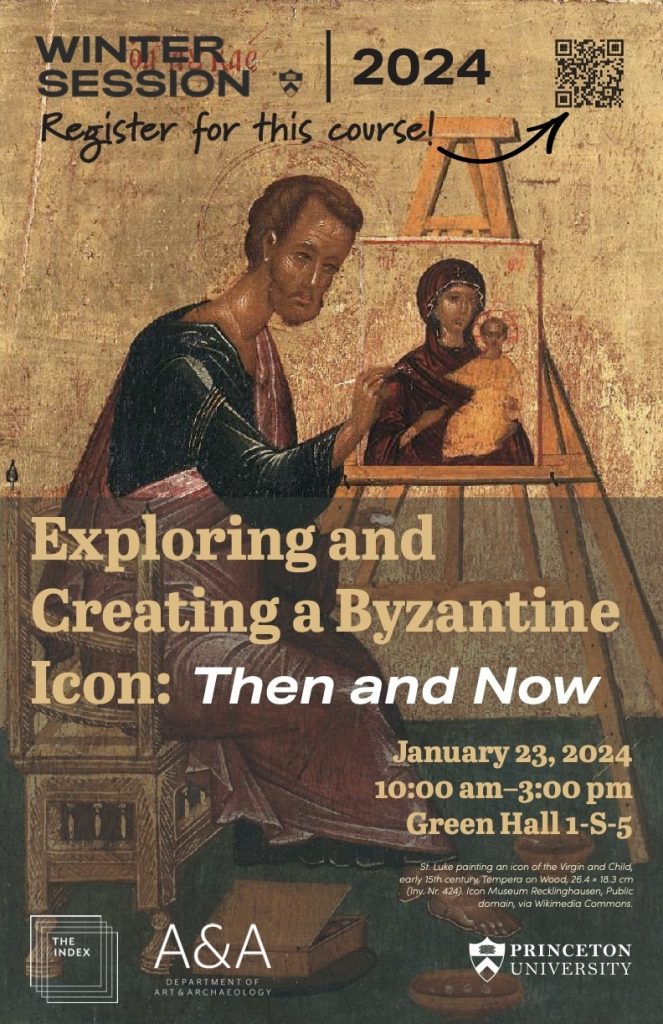
The Index of Medieval Art was delighted to offer its second Wintersession, “Exploring and Creating a Byzantine Icon: Then and Now,” on January 23rd, 2024. Its fifteen participants included Princeton staff, faculty, undergraduate and graduate students. In the first part of the workshop, they learned about the history and creation of Byzantine icons. In the second, they had the opportunity to create their own icons using modern artistic materials.
Index Art History Specialists Maria Alessia Rossi and Jessica Savage led the workshop, opening with a presentation on the Index resources and delving into some questions about iconography using large reproductions of the icons from Mount Sinai, generously loaned by Visual Resources, as a basis. The group discussed the iconographic details in works of art, exploring the subject matter in icons that generate tags in the Index database. Jessica invited the students to observe the figures and scene in a twelfth-century Sinai icon of the Annunciation (Index system no. 57527), looking for major and minor details in the painting, as small as an octopus swimming underwater. Alessia introduced participants to the way Byzantine icons were displayed and their devotional practices by examining a folio from the Hamilton Greek Psalter (Index system no. 103381).
The first guest lecturer, local icon painter Maureen McCormick, showed the participants how to make the binder for egg tempera paint by mixing egg yolk and … No, not water … rather, white wine! Maureen showed the class all the tricks of the icon painter, including where to buy authentic pigments, how to grind them, and how to literally use one’s breath to “blow” gold leaf onto a red clay bole sample, which formed the nimbus of a saint. A short Instagram reel was made by Kirstin Ohrt, Communications Specialist in the Department of Art & Archaeology, to show Maureen’s breathtaking lesson in action, and you can check it out here: https://www.instagram.com/artandarchaeologyprinceton/reel/C2ud3gZLAJW/.
The afternoon session was led by Department of Art & Archaeology graduate student and icon painter, Megan Coates, who spoke about her own work with icons, as well as their importance for memory and communication. As part of an organized hands-on activity, participants created their own Byzantine icons using templates designed by Megan or choosing their own models from books or memory. Acrylic paint, brushes, drawing materials, gessoed panels, as well as gold and silver leaf materials were supplied by the Princeton Office of Campus Engagement. The outcomes were astonishing!
It was a pleasure to observe the participant’s ideas and skillful process unfold as they engaged in the long-treasured art of icon-making. One participant Sigrid Adriaenssens, Professor of Civil and Environmental Engineering, wrote to us after Wintersession and said, “Thank you so much for organizing this workshop. It opened a whole new world to me that I didn’t know existed at Princeton. I really enjoyed learning about the Index, icons, and how they are made. The speakers Maureen and Megan were also very interesting and exciting to listen to!” Another participant, Zi (Zoe) Wang, visiting doctoral candidate and researcher at Princeton from the Central Academy of Fine Arts in Beijing, said she felt transported by the instrumental music we played during the hands-on activity. Zoe said about the experience, it was like “immersing myself in meditation.” We couldn’t agree more!
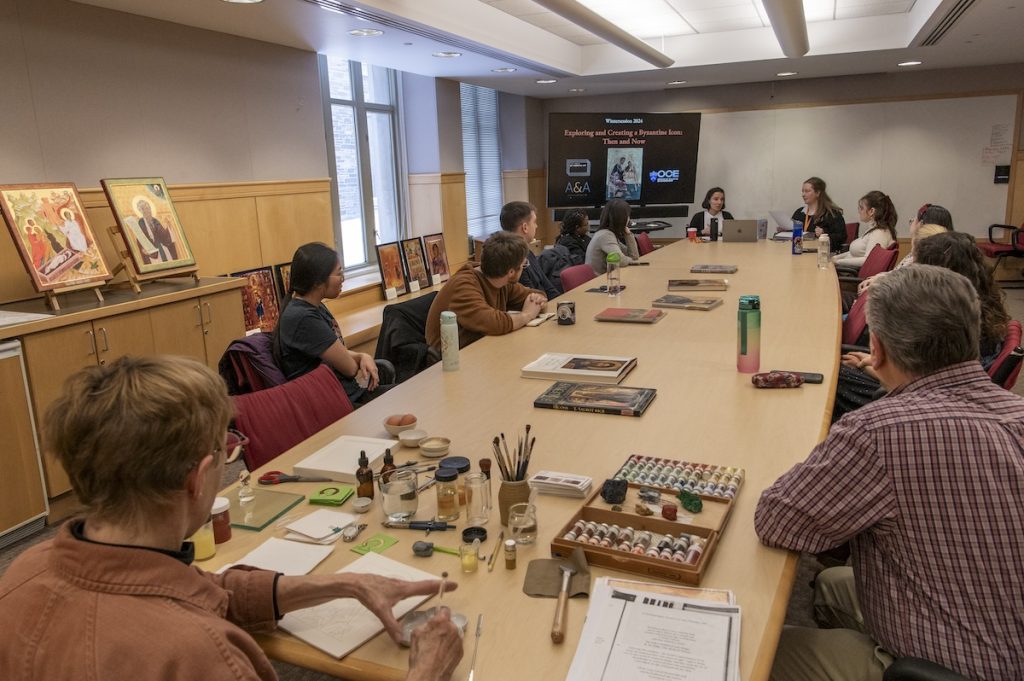
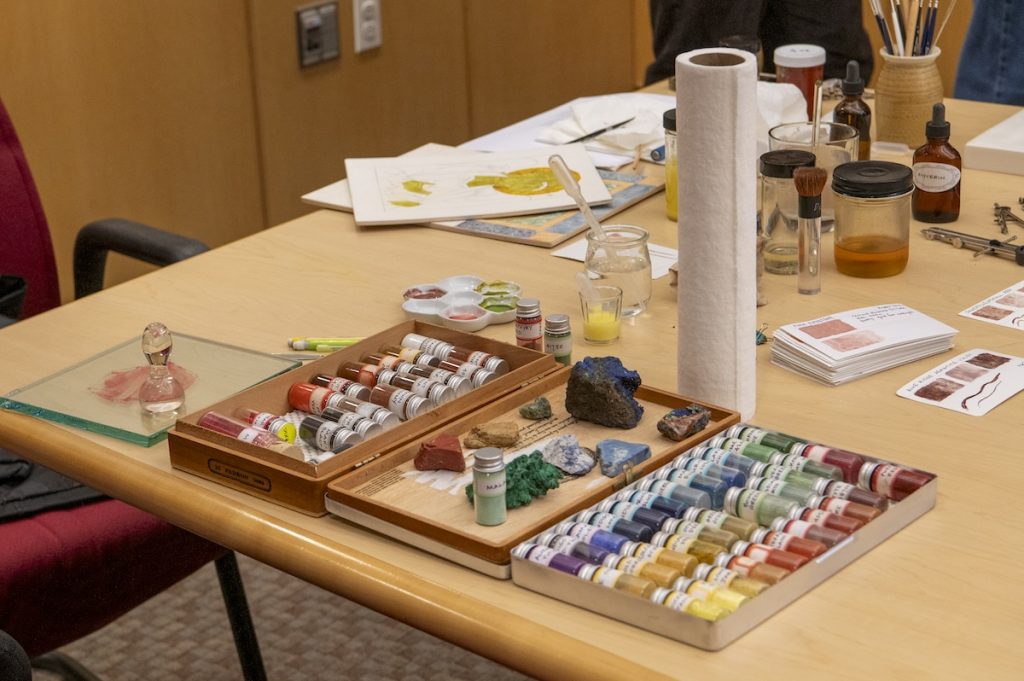
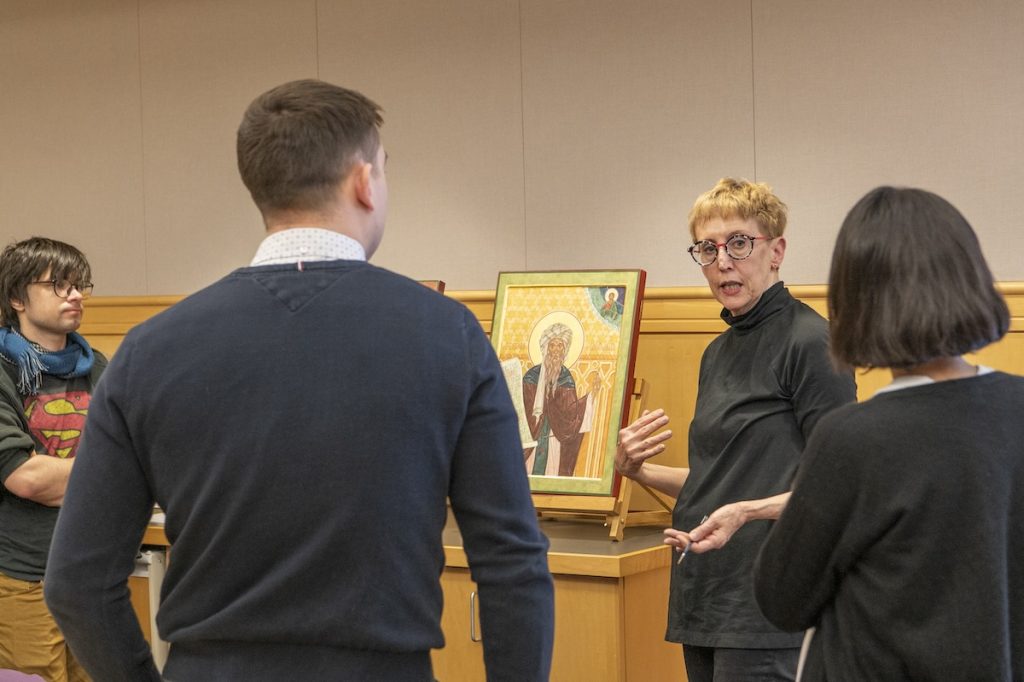
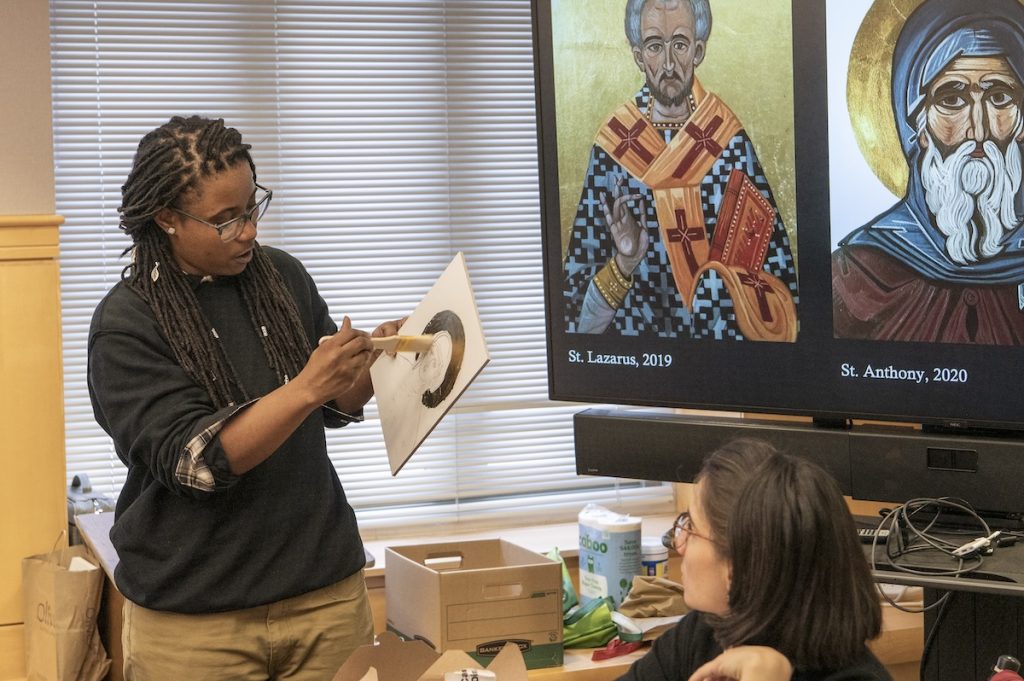
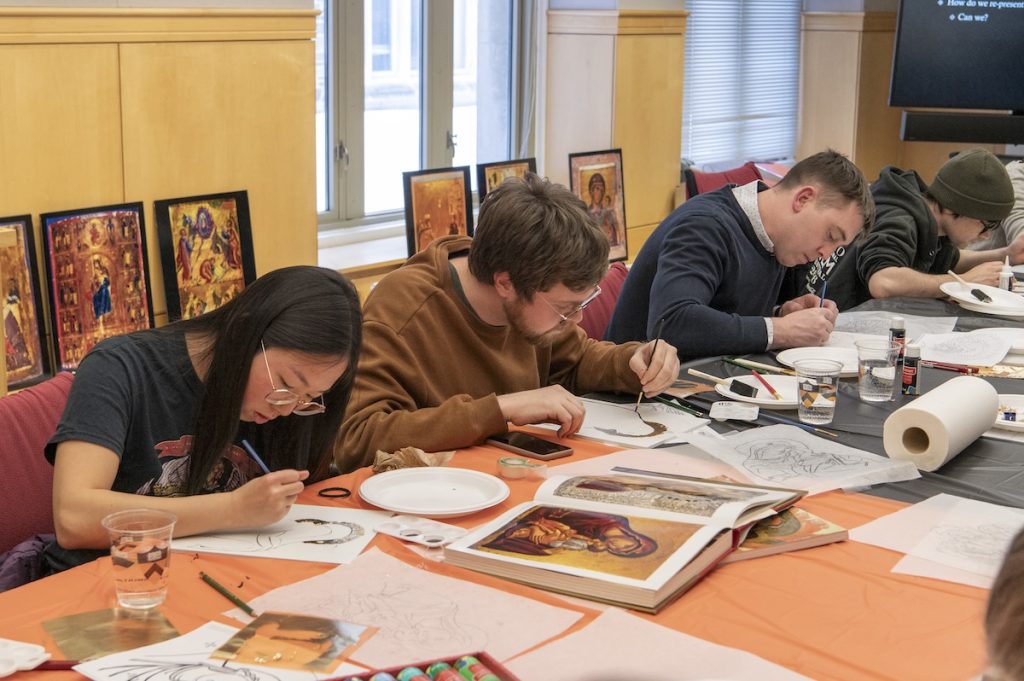
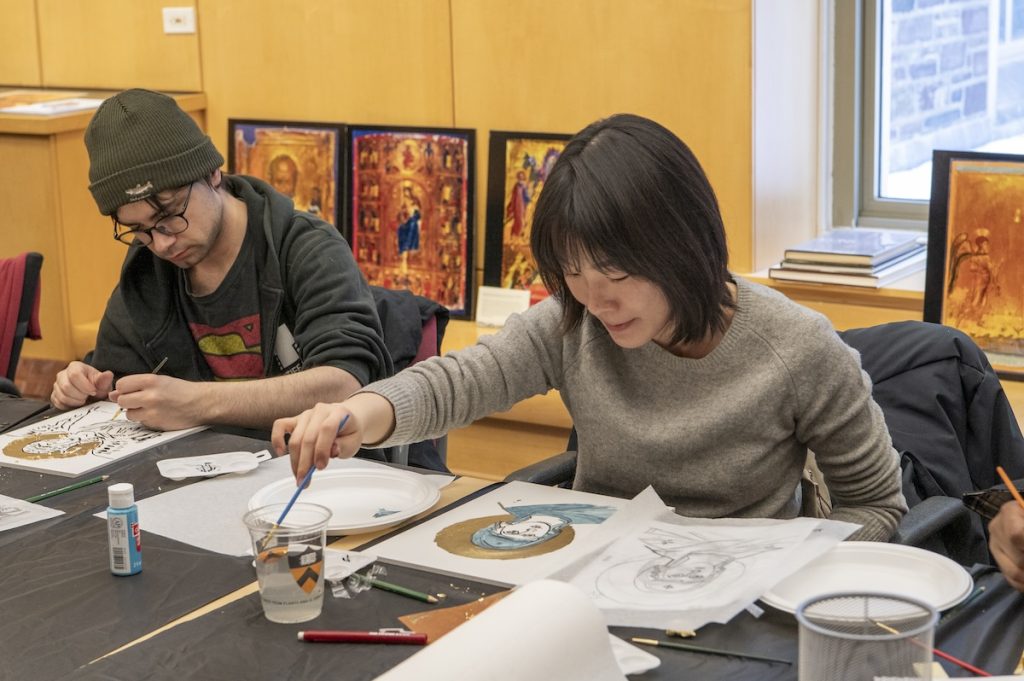
Are you interested in learning more and researching icons at the Index? Here are some general tips for starting an Index search about Byzantine icons, especially if you do not know exactly which icon you are looking for!
However, these results might be too broad, so if you want to refine them you can keyword search the word “Byzantine” on the upper right search window of the database, and then filter by these other controlled terms we just mentioned, such as Work of Art Type “panel” or Medium “wood.” But if you want even narrower results, or if you know the iconography you are interested in, such as the iconography of an angel, or searching for angels by name, as in the case with the Annunciation image, you can filter by the Subject “Gabriel the Archangel.”
If you have any questions about starting research with the Index resources, fill out our inquiry form and we will be in touch: https://ima.princeton.edu/research-inquiries/.
Finally, this Wintersession workshop could not have been possible without the generous support of the Princeton Office of Campus Engagement, the Department of Art & Archaeology, and the Index of Medieval Art. Thank you to all who helped plan and participated in this event!